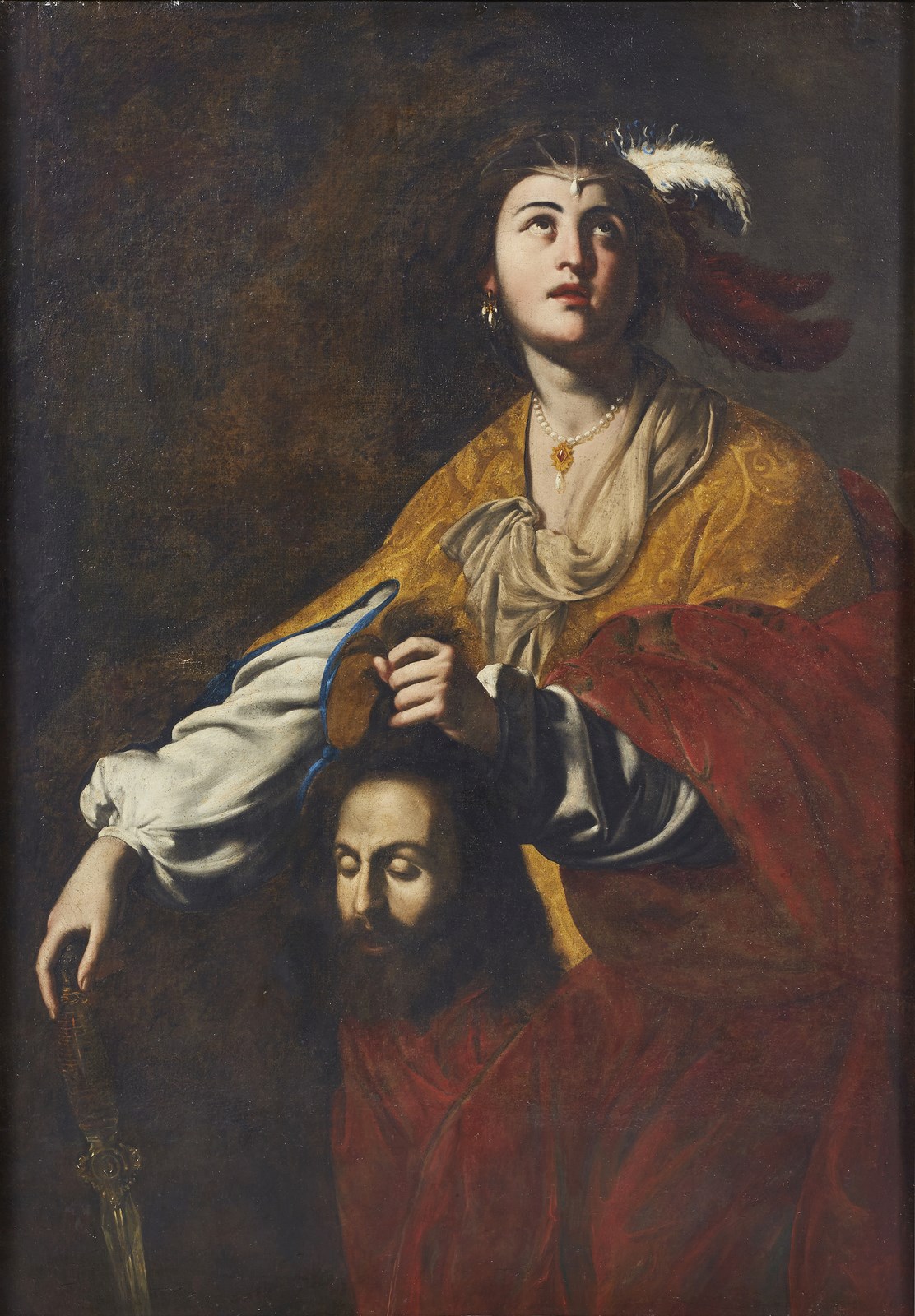
Lot 60
Massimo Stanzione
Judith with the head of Holofernes
Thanks to Prof. Riccardo Lattuada and Prof. Nicola Spinosa for confirming, each independently, the attribution of the work on a photographic basis.
Provenance: Private collection, Genoa.
Comparative literature: S. Schutze and T.C. Willette, "Massimo Stanzione. The complete work", Naples 1992, pp.208-209 (A45, A45.a, A45.b) and pp. 312-313, fig. 170-171-172.
"Fundamental figure of the Neapolitan School at the end of the second quarter of the 17th Century" and "irrepressible presupposition, almost to the neoclassical results of the last 18th Century": this is how Raffaello Causa defined Massimo Stanzione in his introduction to the catalogue of the Turin exhibition of 1983 on Neapolitan Painting from Caravaggio to Luca Giordano, placing him among the greatest and most authoritative representatives of the art scene of the 17th century Naples. Stanzione was undoubtedly one of the forefathers of the Neapolitan painting of the first half of the century, able to assert himself personally, alternating important private commissions and profane paintings (see the "Sacrifice to Bacchus" of the Prado Museum, Madrid) with works for the churches of Naples, such as the large altarpiece of the Madonna del Rosario in the Cacace chapel in San Lorenzo Maggiore, but also able to create a real artistic heritage from which the most important personalities of the next generation emerged: among others, Francesco Guarini, Onofrio Palumbo and Giuseppe Marullo, with an influence that extended up to Francesco Solimena.
Our painting seems to be an alternative autograph version of the "Judith with the head of Holofernes" of the Museum of Fine Arts in Boston (inv. N ° 94.181), from which it differs slightly in size, which gives it a more vertical cut: the biblical heroine is represented in the moment immediately following the assassination and beheading of the Assyrian general, as she walks with the enemy's head held by the hair and her gaze turned upwards towards God, cloaked in elegant robes and adorned with the refined jewels used to seduce the commander.
The subject, one of the most iconic of Caravaggesque and post-Caravaggesque painting, was experimented by Stanzione, as well as in the Boston work, also in the famous canvas of the Metropolitan Museum in New York (inv. 59.40), with a different layout, with which our composition can be compared above all with regard to some details such as the hand resting on the hilt of the sword, the rich brocade cloth of an intense yellow-gold characteristic of the artist, the red cloak, the feathers on the headdress and the strong similarity between the respective heads of Holofernes. Two other versions of the "Judith" of the "Boston" type are known (S. Schutze and T. C. Willette, "Massimo Stanzione. The complete work", Naples 1992, pp. 312-313, fig.171-172) both however considered non-autograph derivations.
Starting price: € 10.000,00
Estimate: € 15.000,00 - 25.000,00
Do you own a work by and want to sell it?
The department of ARTE ANTICA E DEL XIX SECOLO select works of art by the artist to be included in the next auction.
Request a free valuation
Our specialists are always available to provide free and confidential valuations and appraisals.
Choose one of the following contact methods:
- Send us a request online
- Take a picture and send it via WhatsApp to 339.9908224
- Call the phone number 030 2056796
- Write to us at valutaopera@capitoliumart.it
- Book an appointment












